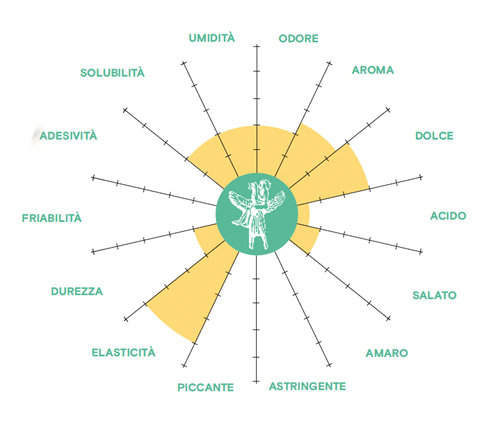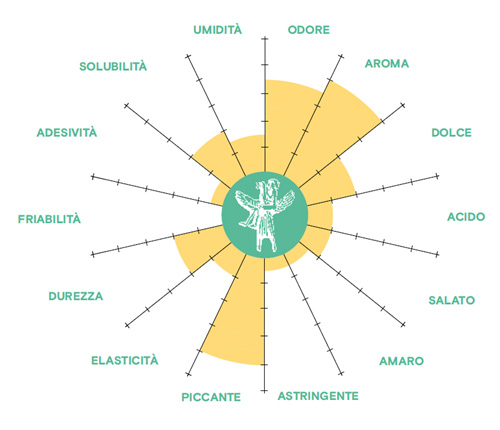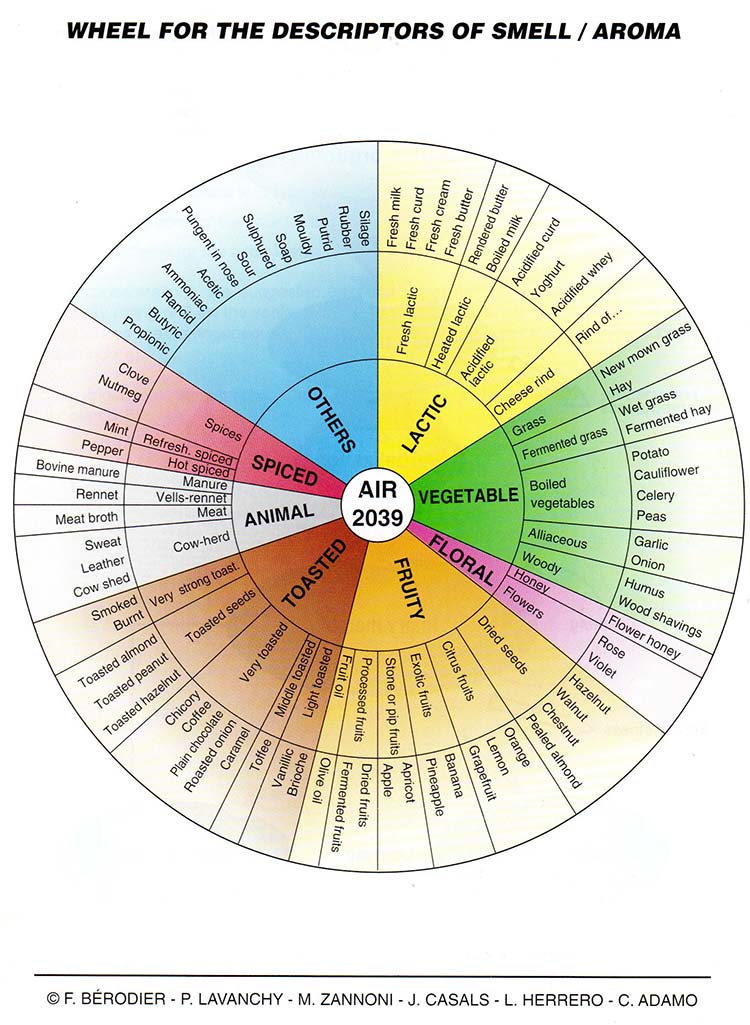Tasting tips Provolone Valpadana P.D.O.
Home » Tasting tips Provolone Valpadana P.D.O.

Tasting tips for Provolone Valpadana P.D.O.: how to best appreciate its sensorial value
Provolone Valpadana is a versatile cheese in terms of shape, and therefore also in terms of its sensory values to the eye, to the touch, to the nose and to the mouth, where it best expresses its flavours, aromas and trigeminal sensations.
In addition, Provolone Valpadana P.D.O. can be smoked, thus offering the consumer a further possibility of combinations of flavours, aromas and taste sensations.
In the midst of these balances, the tasting technique of Provolone Valpadana P.D.O., like that of all cheeses, is nothing more than reliving and repeating, consciously and calmly, the same moments that we usually experience and repeat mechanically and hastily.
Therefore, the cheese sample must be looked at carefully, taken with the fingers and brought under the nose, broken to appreciate the volatile fatty acids released and then placed between the teeth and chewed carefully to appreciate the unique organoleptic characteristics. Last but not least, the sensations in the mouth, detected by the trigeminal nerve: freshness, spiciness, sharpness, astringency and any aftertaste.
The sensorial profiles of Provolone Valpadana P.D.O.
ETANA MODEL
by V. Bozzetti, B. Morara, M. Zannoni

Provolone Valpadana P.D.O. Mild
The paste of the Provolone Valpadana P.D.O. Mild cheese is white-yellowish in colour, with a firm consistency.
It is elastic to the touch, tending to regain its shape if pressed or curved, and of limited hardness (1.5) but with excellent elasticity (4). To the nose it offers the typical smell of milk, enriched with hints of butter (2); its typical mild flavour (3) emerges in the mouth, where it dissolves easily in the saliva (2) to express the best lactic-vegetal aromatic descriptors (2.5).
Salted just right (1) Fruity aromatic compounds may also be present in some mountain products.
The easy dissolvability (2) of the cheese and the modest moisture content (2), after chewing, leaves the mouth fresh, ready to welcome a perfect match according to different schools of thought.
Provolone Valpadana P.D.O. Strong
Provolone Valpadana P.D.O. Strong, depending on its maturity, is straw yellow in colour reaching adumbrate reflections, with a solid paste featuring slight cracks and/or a solitary hole.
To the touch it is of medium hardness (2), not very elastic (1) and slightly sticky (0.5); but it is the smell (3.5) that attracts the taster. In fact, the olfactory descriptors (4) are complex, including the animal component of the rennet paste in the lactic base.
In the mouth, it melts well (2), offering balanced basic flavours (sweet 2, acid 1, salty 1, bitter 0.5), only to emerge with a strong spicy trigeminal sensation (4), sometimes accompanied by a modest sharpness (0.5).
However, it is the strong and persistent aroma (4) that triumphs in the mouth, immediately ready to accept a glass of good wine.
ETANA MODEL
by V. Bozzetti, B. Morara, M. Zannoni

The sensorial values: Sight
When looking at the cheese, one notices the characteristics of the rind and, when cut, of the paste. The most observant will also notice the variation of these characteristics from the rind to the centre of the cheese and will be able to perceive and appreciate its colour, the continuity or discontinuity of its surfaces, the presence or absence of typical elements such as the holes (rounded or irregular), evenly or unevenly distributed, the flakes and tears (horizontal cracks), crystals (concentrations of amino acids in cheeses with a longer maturation period), drops of water (in relation to the degree of humidity) or oil (in relation to the fat present).
In terms of colour, the Provolone Valpadana P.D.O. is straw yellow in colour, with references to white in the freshest cheeses, deep yellow in the medium-aged cheeses and brown in the very mature cheeses.
The sensorial values: Touch
Touching the cheese with your fingers provides important sensorial information on its appearance, particularly on the surface of the cut.
In fact, by passing your index finger over the slice of cheese you can assess how smooth or rough the surface is, if there are grains on the surface.
Tactile sensitivity also detects the degree of moisture on the cut surface.
By touching the cheese, the taster assesses the elasticity of the cheese mass and also its hardness, which will then be confirmed by the tactile sensitivity of the teeth, before chewing.
The sensorial values: Smell
By smelling the cheese strongly and breaking it up under your nose, you will be able to appreciate the scent and its overall intensity in all its complexity, then moving on to identify the families of scents (lactic, vegetable, floral, fruity, toasted, animal, spicy, other) and, with the appropriate experience and professional specialisation, you will also be able to identify the various sub-families and individual olfactory descriptors.
The sensorial values: Taste
Slowly chewing the cheese reveals an infinite number of wonders!
The initial and valuable indications come before the actual chewing, when the cheese is placed between the teeth, i.e. from the jaw pressure needed to deform and chew the cheese. We will have a whole series of sensations and perceptions relating to elasticity (ability to regain the initial shape after stress), hardness (ability to resist deformation), deformability (ability to move the material internally), friability (ability to be broken into pieces), and adhesiveness (ability to adhere to contact surfaces). Chewing, or rather optimal chewing, will bring the temperature of the cheese up to our body temperature, in the meantime releasing all the aroma present in the cheese itself and perceptible in three dimensions: intensity, quality and persistence. The aroma can be perceived through the olfactory organ by the retro-nasal route, during the exhaling phase.
The aroma wheel
Elasticity, hardness, deformability, friability and adhesiveness are the pentagram of the structure, from which the harmony of smell and taste of the cheese flows.
The four basic flavours (sweet, sour, salty and bitter), the trigeminal sensations (spicy, astringent, warming, refreshing) and sometimes the aftertaste (olfactory-gustatory sensation, following swallowing, which differs from the previous ones).
The wheel of the smell and aroma descriptors classified into families, subfamilies and individual descriptors is always the same.
The aroma wheel is made up of three concentric circles of different colours and divided into several aroma categories such as fruity, floral, vegetal, etc.
In the inner circle the categories are partly subdivided into subcategories such as stone fruit, berries, citrus, exotic and so on. The outermost circle is made up of 65 individual, uniquely characterised attributes.
These attributes are an important reference point for characterising the aromatic diversity of cheeses and are of great help in drawing up an appropriate flavour profile.
